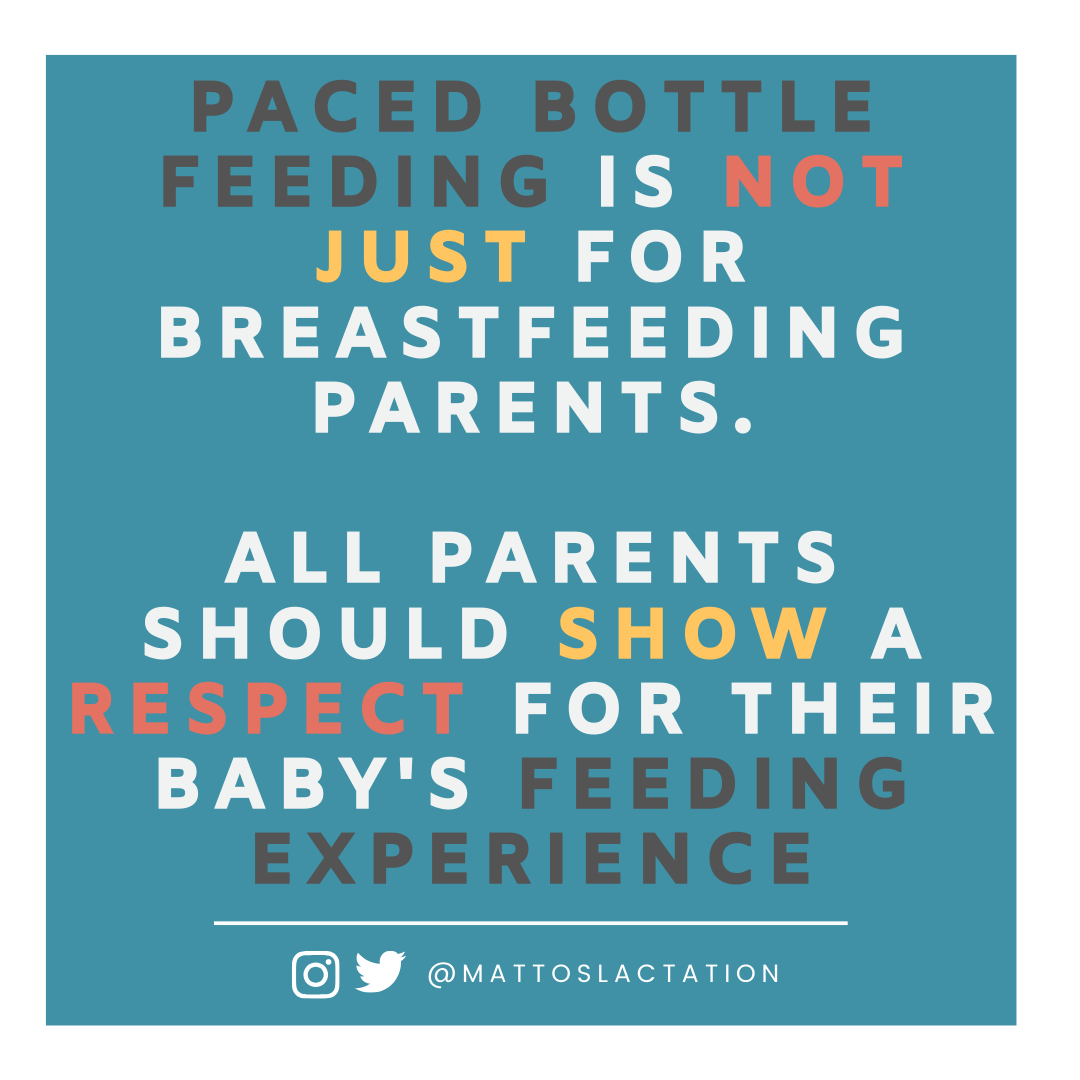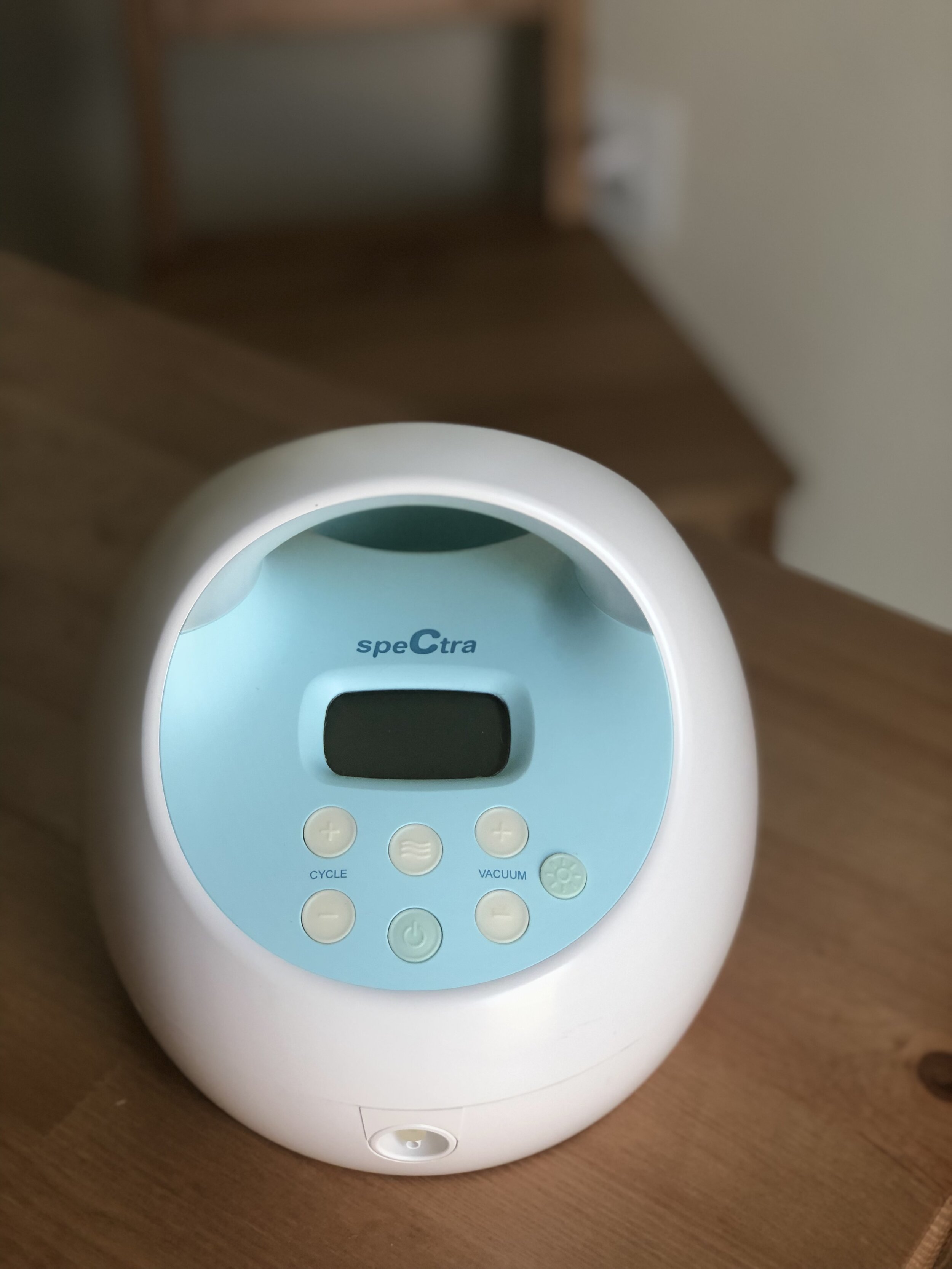Should I pace feeds? Is paced bottle feeding really necessary??
Read time | 12 minutes
The first study on paced bottle feeding was published in 2000.
The study, A self-paced oral feeding system that enhances preterm infants' oral feeding skills, assessed the impact feeding devices had on oral feeding skills.
Their conclusion (which is not in the least bit surprising) :
The improved oral feeding performance of VLBW [ very-low birth weight] infants correlated with enhanced OFS [oral feeding skills]. This study is a first to recognize that VLBW infants' true OFS are more mature than recognized. We speculate that the physical properties inherent to standard bottles that are eliminated with the self-paced system interfere with the display of their true oral feeding potential thereby hindering their overall oral feeding performance.
Though their findings were significant in many aspects, the biggest take away is that standard bottle systems impact oral feeding performance in at least very-low birth weight and premature babies.
It wouldn't be until 2007 that the phrase "cue-based bottle feeding" would start to show up regularly in studies, which often looked at the impact of cue-ing for feeds impacted preterm infant's weight gain.
Finally, 2013 marks the first study (I found) that describes the current understanding of paced bottle feeding. Again, it looks feeding premature infants, who often are born before they have had a chance to develop and refine their feeding skills.
The study, titled Cue-based Co-regulated Feeding in the Neonatal Intensive Care Unit: Supporting Parents in Learning to Feed Their Preterm Infant, focused on the impact on feeding skills when parents co-regulated bottle feeding.
Another not surprising conclusion;
Providing parents with skills to co-regulate with their infant during feeding can support parent-infant attachment, reduce stress, and improve intake.
A modern-day definition of Paced bottle-feeding
Paced bottle-feeding seems to have garnered the reputation that it's only a technique to support breastfeeding for parents who choose to or need to both breastfeed and bottle feed.
It's framed as breastfeeding disruption prevention that only needs to be utilized by breastfeeding families when their babies are subjected to the bottle.
And while the merits of paced bottle feedings are genuine for full-term breastfeeding babies, many parents are left wondering, "Do I need to pace bottle feed if I am not breastfeeding?"
A basic definition of paced bottle feeding
The standard definition of paced bottle feeding is rather passive. Paced bottle feeding is described as a technique that allows the infant to be more in control of the feeding pace.
General requirements are:
feeding in an upright position
use of a slow flow nipple
Parent initiated breaks
And cue-based signs of hunger satiety
Often time small feeds of 4 ounces or less are included as being a staple requirement as well.
An updated definition of paced bottle feeding
Rather than a passive, baby-led bottle feeding technique, I like to think of paced feeding similar to the 2013 version- Co regulated by person feeding the baby.
Co-regulation describes a team effort in navigating bottle feeding and is not dependent on what is being offered (Human milk or formula), how the baby is usually fed ( exclusively or occasionally bottle-fed), or who is doing the feeding (not a method of feeding just for parents).
Is paced bottle feeding necessary?
It's absolutely imperative.
To understand why co-regulated infant feeding is necessitated, a basic understanding of infant feeding mechanics is required.
Note: Notice I said, "co-regulated infant feeding" and not just "co-regulated bottle feeding." That is because all babies need co-regulation in some form or fashion, and even directly breastfed babies need co-regulation when having feeding challenges (Ie, upright nursing positions, frequent breaks, cheek support, etc.).
The infant feeding process
The feeding process is complex, requiring coordination of many sensory and motor inputs to successfully and safely extract and transport fluids from mouth to the stomach.
One of the most vital sequences that must be highly coordinated for safe infant feeding is the suck-swallow- breath process.
The main points to know about safe feeding and the suck-swallow-breathe process are as follows:
Babies need to accomplish all of the independent steps in a coordinated fashion and at the appropriate frequency to safely transfer sufficient milk
Babies cannot breathe while they are swallowing
Swallowing and breathing should have a 1:1 ratio- That is a breath for every swallow
Breathing should be quiet, regular and smoothe while feeding
Coughing or choking is a sign that milk has entered the airway
In addition to the suck-swallow- breathe process, the act of swallowing is a multi-step process that must be highly coordinated as well.
Each step of the swallowing process involves a varied set of nerves and muscles, which means there's quite a bit of opportunity for feeding to become unsafe if there's a disruption at any point.
Oral Preparatory Phase: Involves lips, tongue, cheeks and hard palate
Oral Transitory Phase: Involves the tongue and mandible
Pharyngeal Phase: Involves the soft palate, muscles of the throat, epiglottis, and more
Esophageal phase: Involves the esophagus.
What can impact infant feeding skills?
As one can imagine by the sheer complexity of such a seemingly simple task of swallowing, many things that can impact infant feeding skills.
Age: Premature or sick babies may have a harder time with oral feeding that full-term, healthy newborns
Head, neck, and body posture: Misalignment due to positioning or postural abnormalities, such as torticollis, can impact the ease of feeding, both in the suck swallow breathe process and the specific swallowing steps.
Oral tension or restriction: Such as a tight genioglossus or tongue, lip, buccal ties
Low tone: Both body and oral tone can impact feeding
Medical issues: Heart and respiratory conditions can affect how well babies can manage oral feedings. Remember, babies can't breathe and swallow at the same time, and breathing always takes precedence, sometimes resulting in fluid aspiration.
Craniofacial development anomolies: Any abnormalities of the mouth, face, or head can impact infant feeding
Neurological issues: Issues with the brain, spinal cord and/or nerves (especially the cranial nerves)
All of the above pertains to medical or physical aspects that can impact infant feeding, many of which are not easily remedied.
Often overlooked are the environmental factors that impact safe infant feeding such as
The type of feeding device used
Rate of flow of fluids
The duration of feeding
Identifying stress cues
How much or little attention paid during the feeding process
The position used during feeding
These are the controllable factors that, when paired with knowledge of your babies' infant feeding skills and health history, comprise the co-regulation or "paced feeding" plan.
Inherent pacing issues with bottles
By nature of the standard bottle design, babies are likely to be overwhelmed regardless of nipple flow rate or age.
Standard bottles use positive hydrostatic pressure and vacuum pressure build-up to speed up the delivery of its contents.
What that means is that the weight of the contents "pushes" out the fluids, and continues to occur whether or not a baby is actively engaged in feeding.
Additionally, the act of swallowing creates an increase in the vacuum pressure of the oral cavitiy, causing fluids to flow rapidly during the swallowing process. Immediately post swallowing, most babies already have the next 'bolus' of fluid ready for swallowing, but may not have yet taken a breath.
Breath holding and rapid swallowing ensue, and once a baby instinctively breathes (imagine that gasp when you hold your breath for a bit), they may cough or choke due to fluids entering their airway.
Co-regulating feeds by frequently initiating breaks during bottle-feeding shows respect for their feeding experience.
Bottle feeding is different from breastfeeding, and other feeding methods (such as a cup) as most babies can stop the flow of milk when at the breast and frequent breaks with different feeding methods are more intuitive.
With that said, initiating frequent breaks should be something all parents due when needed, regardless of feeding method.
Most nipples flow too fast
Slow flow nipples are not created equal, and there is no set standard for how slow the flow must be to qualify as "slow flow."
Flow rate refers to the number of milliliters per minute that flow from the nipple. Generally, slow flow nipples have a lower amount of milliliters per minute compared to non-slow flow nipples, though this is not universal.
The mean rate of slow flow nipples is 9 milliliters per minute compared to 14 milliliters per minute for the mean "standard" nipple.
But take the Enfamil slow nipple compared to the Dr browns level 1. Enfamil slow has a flow rate of nearly 15 ml/min per minute compared to the level 1 at less than 10 ml/min, both of which are faster than the Similac standard.
Some nipples, such as the Advent 3 drips 3m+ medium flow nipple, have a rate of 70 ml/minute.
Using a nipple that has an easily manageable flow rate (not too fast, not too slow) shows respect for your baby's feeding experience.
Feeding should take more time than you might think
We've all heard stories of the "overly hungry" baby who scarfs down a full bottle, usually 3 ounces or more, in less than 5 minutes. The parents of these babies may describe their children as "ravenous" or "greedy."
Using a cue-based, co-regulated feeding method should take anywhere for 15-30 minutes, depending on the volume of feed and your baby's feeding abilities.
Some babies may need feedings less than 15 minutes as part of a personalized infant feeding care plan, but this won’t be 3+ ounce feeding either.
While most parents feed their babies too quickly, some babies may be demonstrating feeding challenges by partaking in long feeding sessions.
In either case, aiming for 15-30 minute feeds shows respect for your baby's feeding experience.
But more important than watching the clock is watching your baby for stress cues.
Your baby is continually telling you how feeding is going
Even though this baby never changed colors, coughed or choked, they are showing pretty clear signs that feeding is stressful.
Babies are fantastic communicators. So much so that it may take parents some time to learn all their baby is telling them. Many parents learning their new baby may feel confused or frustrated that they have no idea what their baby is saying.
While it does take time to learn your specific baby, stress cues are pretty universal. If there's one thing we know about babies, as demonstrated by the frequency at which they cry, is that they are not afraid to communicate what they're feeling.
Stress cues include:
Feeding with eyes closed
Furrowing or raising the eyebrows
Pulling away, swiping at the bottle, head-turning to avoid, or pushing the nipple out of the mouth
Splaying fingers or toes
Becoming disengaged during a feed
Falling asleep early into a feeding session
Spilling milk out of the mouth later in the feed
Coughing and choking
Color changes (turning red, or blue)
Panting
Nasal flaring
Noisey eating
Wet or gurgly breathing
Breath-holding
Restless feeding
Arching
Only will eat while sleeping
This baby is overwhelmed by the flow pretty early on into the video and the stress cues are subtle. For this baby increased movements and more noisy feedings are signs that they are struggling.
If you notice any of the above stress cues, co-regulation and pacing are of utmost importance, regardless of how or what your baby is fed.
Eating is something that your baby does at least eight times a day, and if it's not a pleasant experience, you may imagine how overwhelming and stressful it is to your baby.
And when feeding is not pleasant, your baby will tell you by showing you in their feeding behavior.
Babies who show stress cues while feeding should be evaluated by an infant feeding expert such as an IBCLC or SLP as soon as possible, but in the meantime, some strategies that might help include:
Feeding your baby in an upright position or elevated side-lying position
Using a slower flow nipple like the Dr. Browns Preemie or Level 1 nipple if bottle feeding is a feeding method of choice
Holding the bottle parallel to the ground so that the milk completely covers the nipple hole but isn't using hydrostatic pressure
Frequently tipping the bottle down, towards the cheek, or completely removing the nipple, if indicated, to PREVENT stress cues. This might mean externally pacing your baby before they would typically show stress cues. For example, your baby coughs after seven suck-swallow cycles so you would give your baby a break at six sucks and swallows.
Taking frequent burping breaks to allow your baby to recuperate
Reading your baby's stress cues and taking the proper, proactive steps shows respect for your baby's feeding experience.
Should you pace feed?
Yes. Regardless of whether or not you're breastfeeding, you should be following your baby's cues and co-regulating feeds, aka paced feeding.
I hope it's clear that that paced bottle feeding is not just a thing for breastfeeding parents- it's a method of respecting your baby's feeding experience.
And all babies deserve to have an enjoyable feeding experience.
Do you agree? Please share your comments below.





